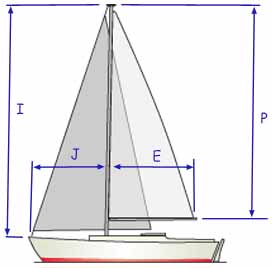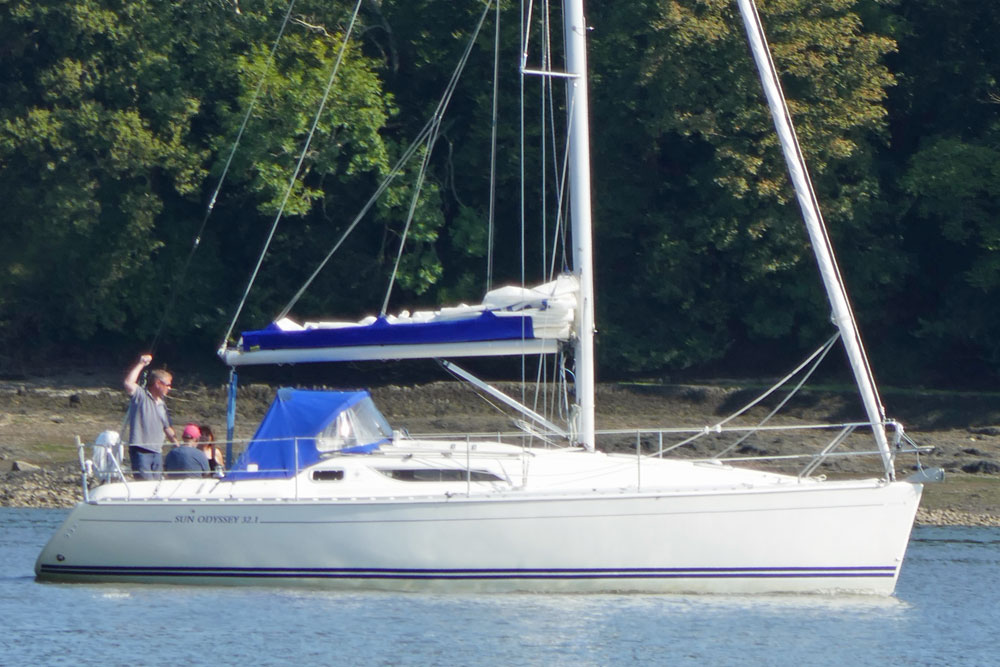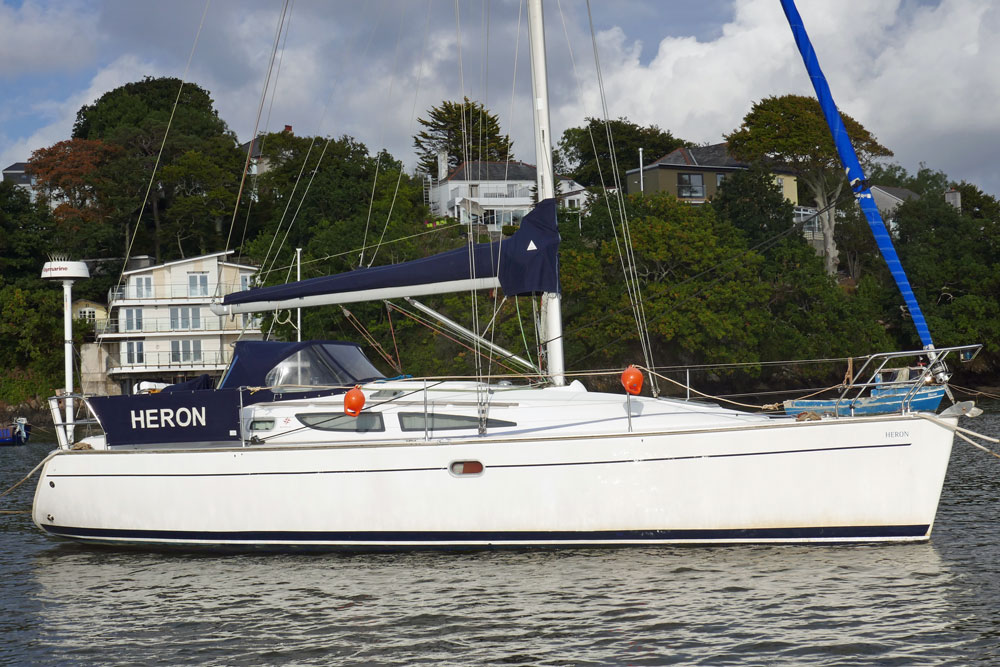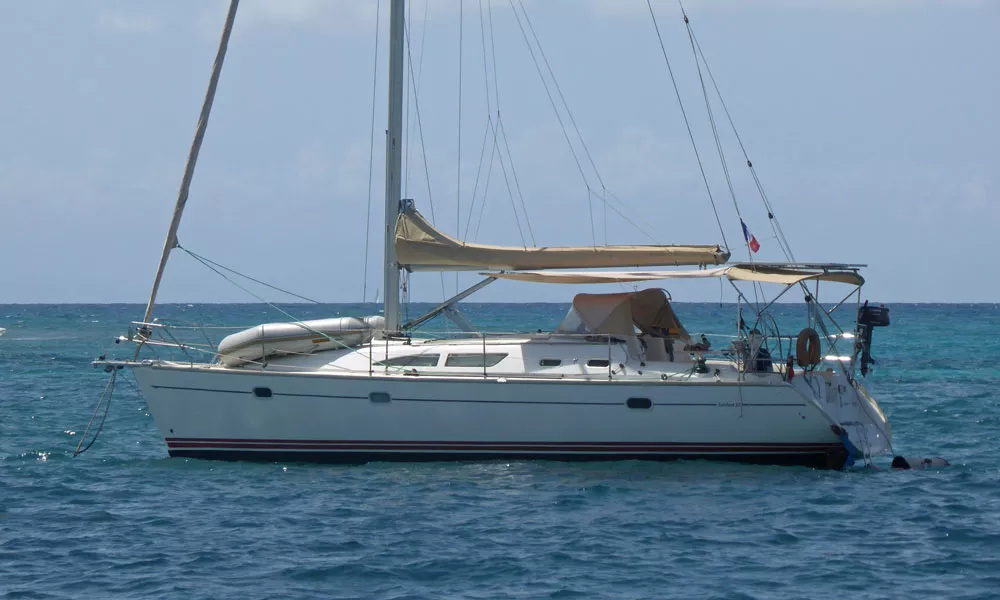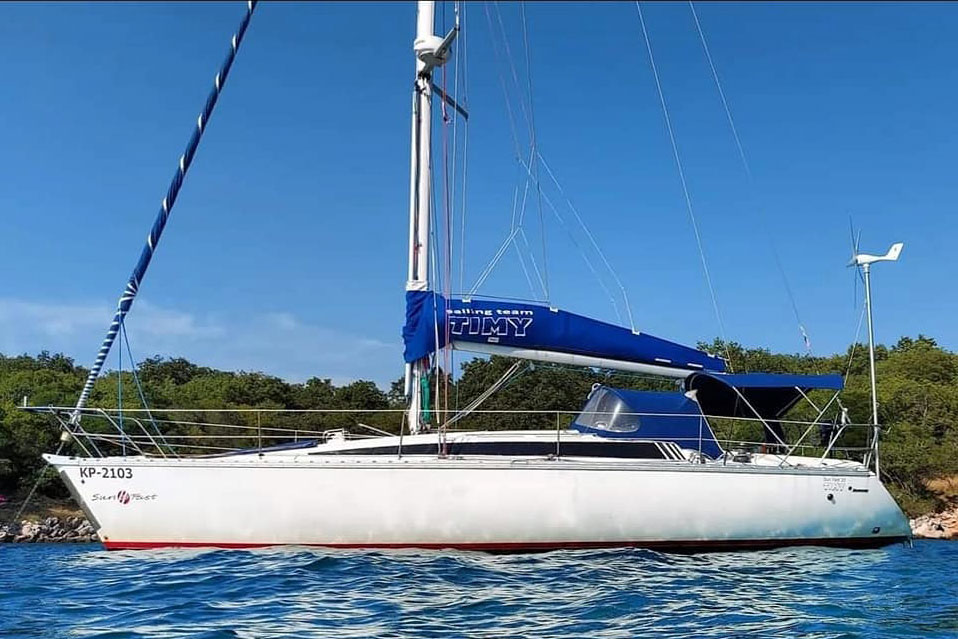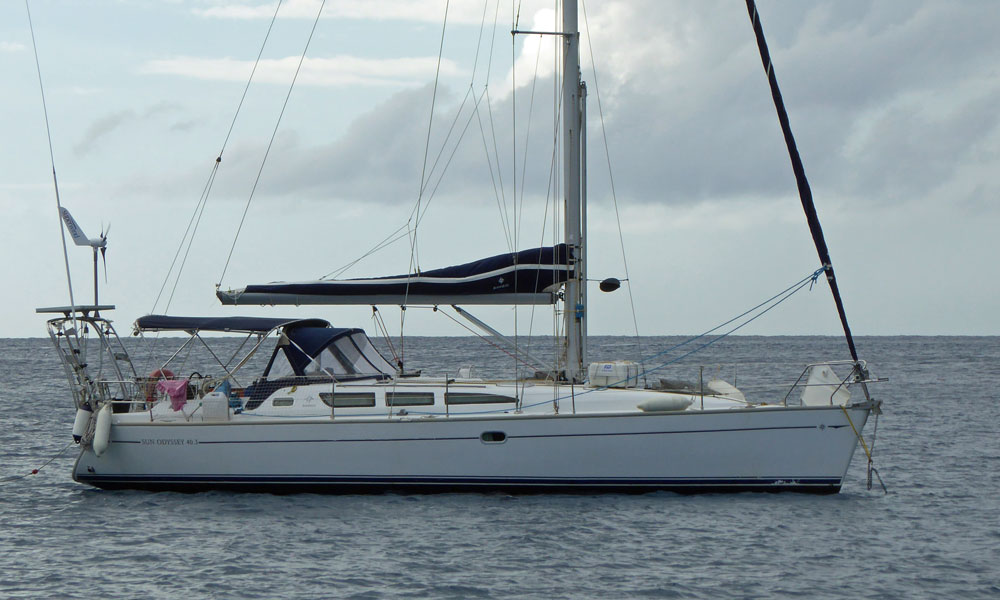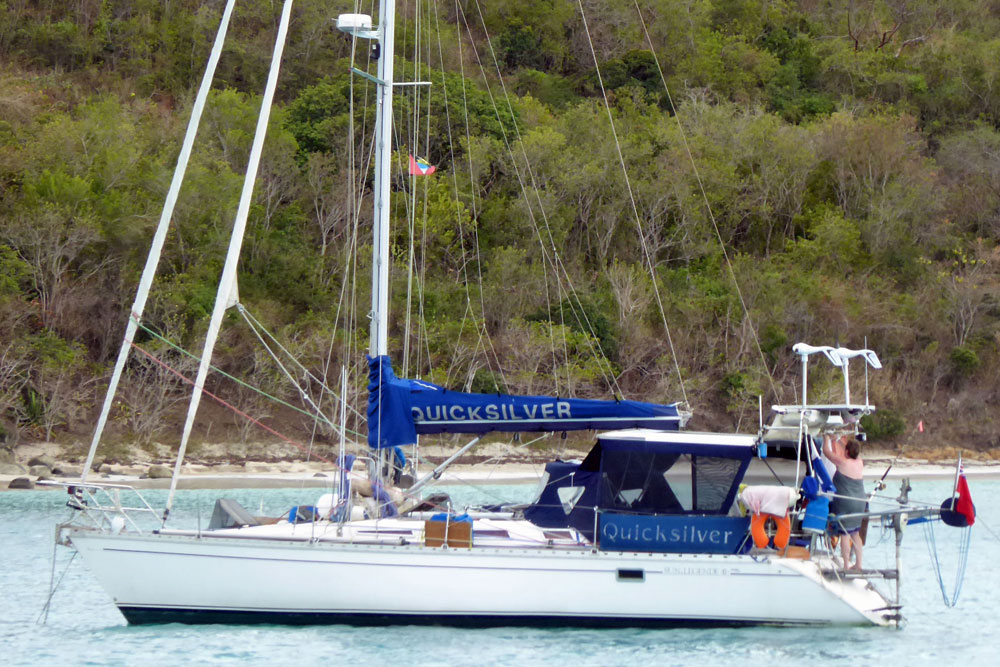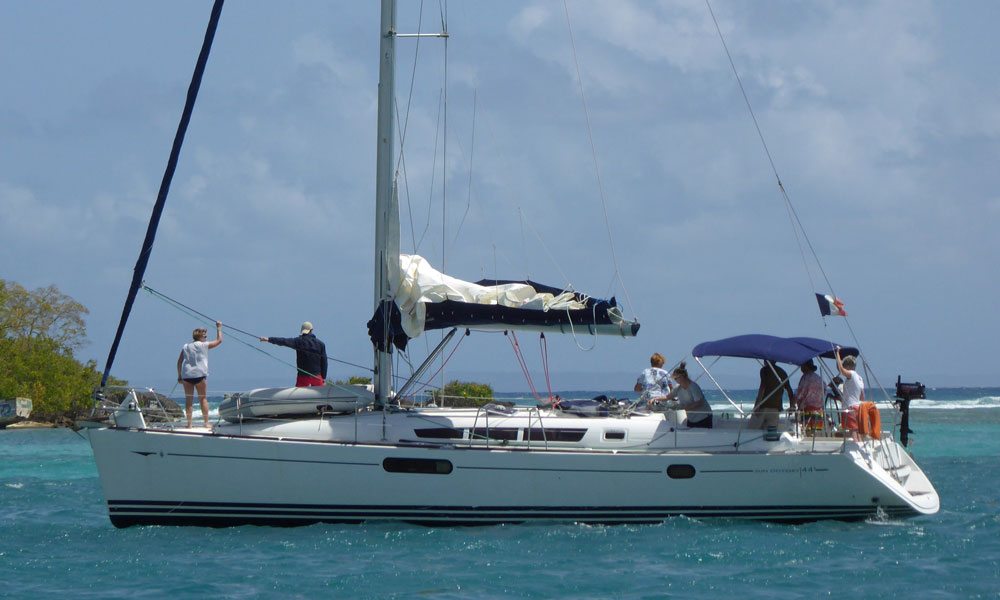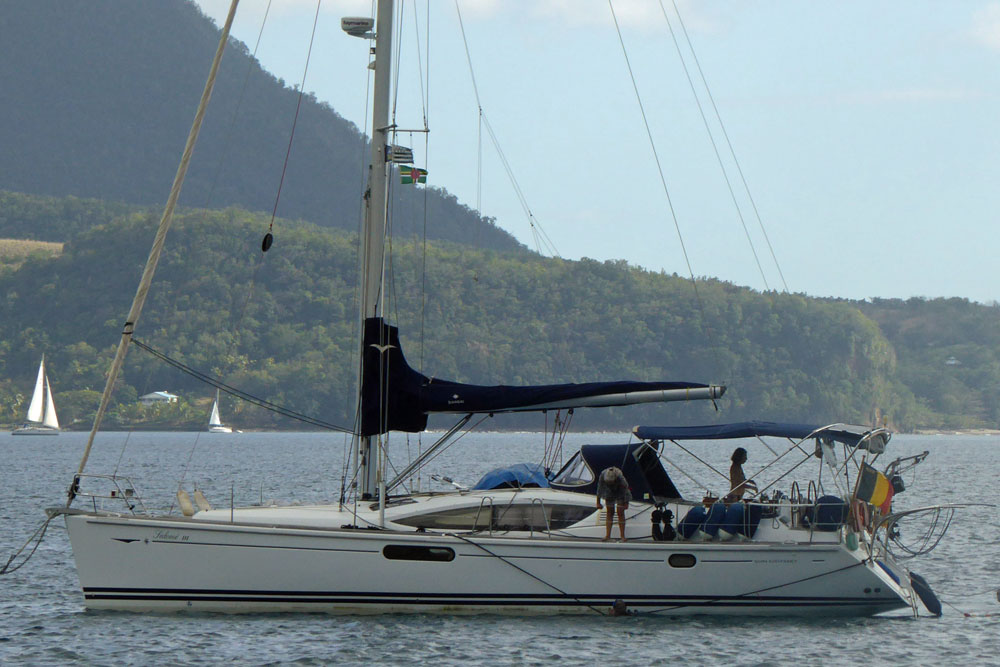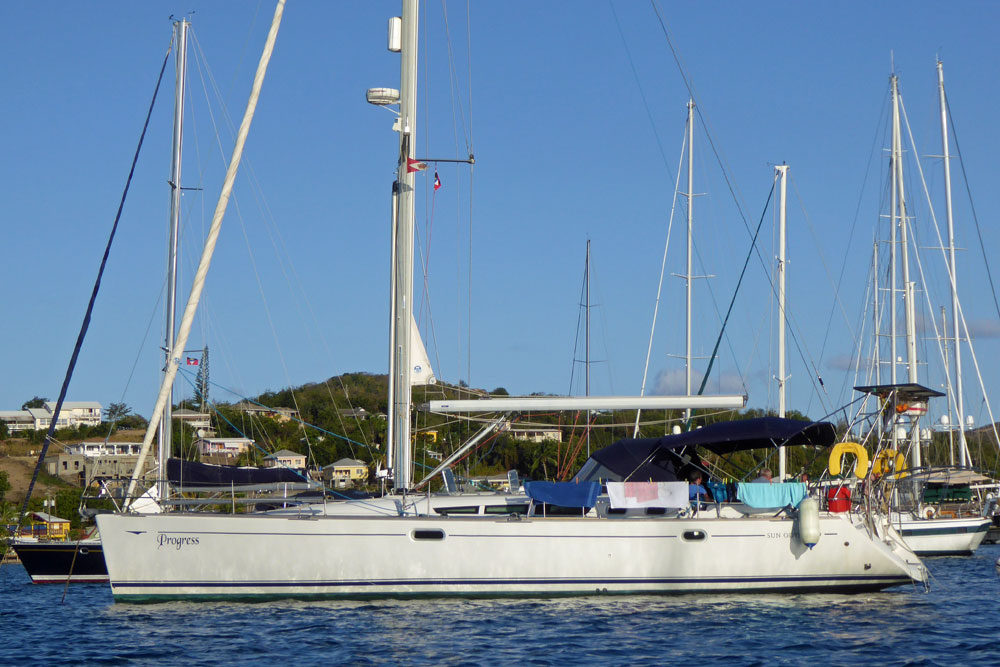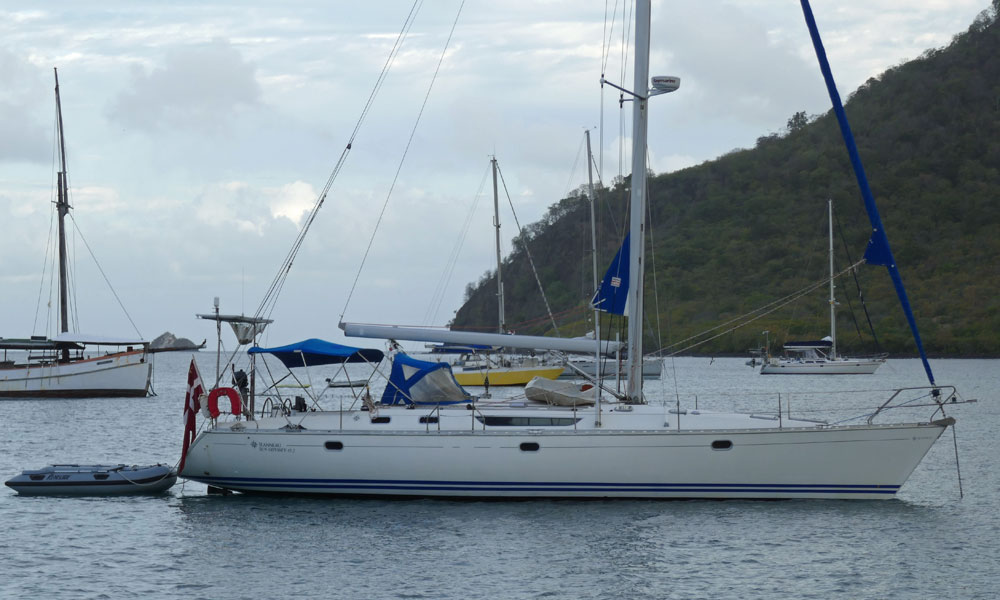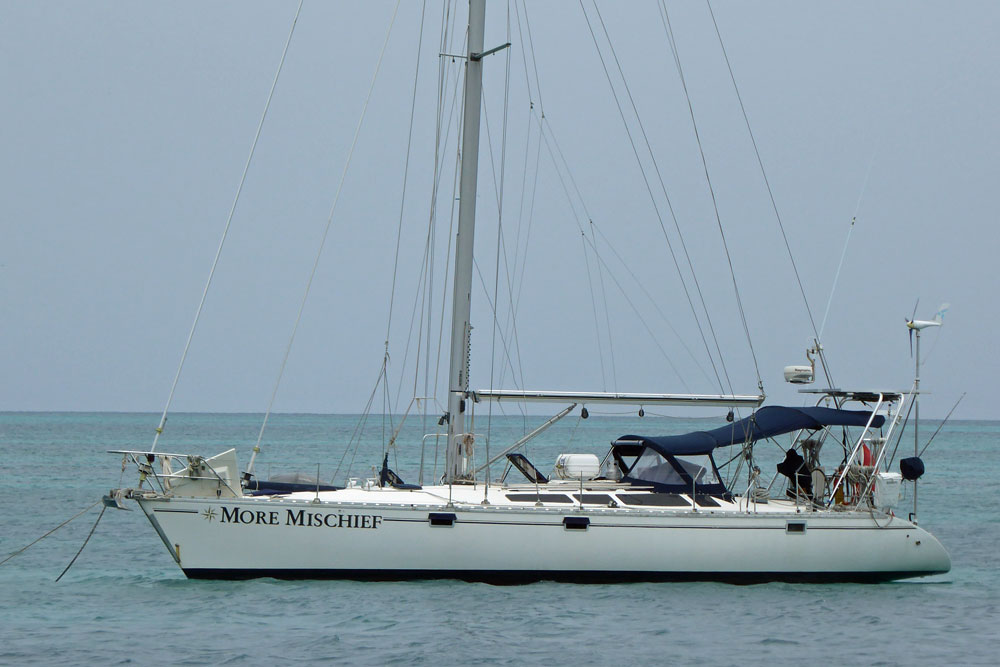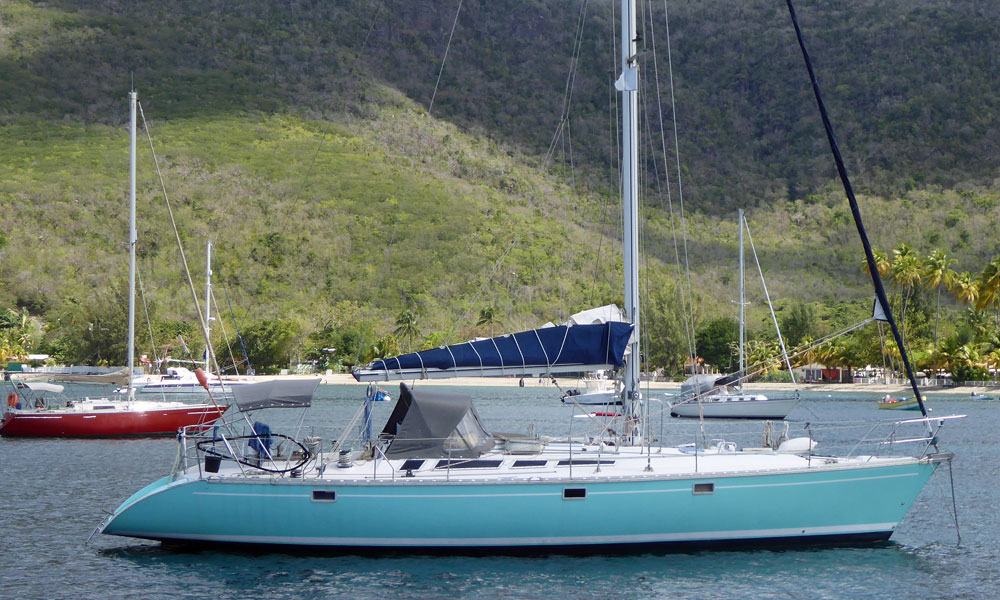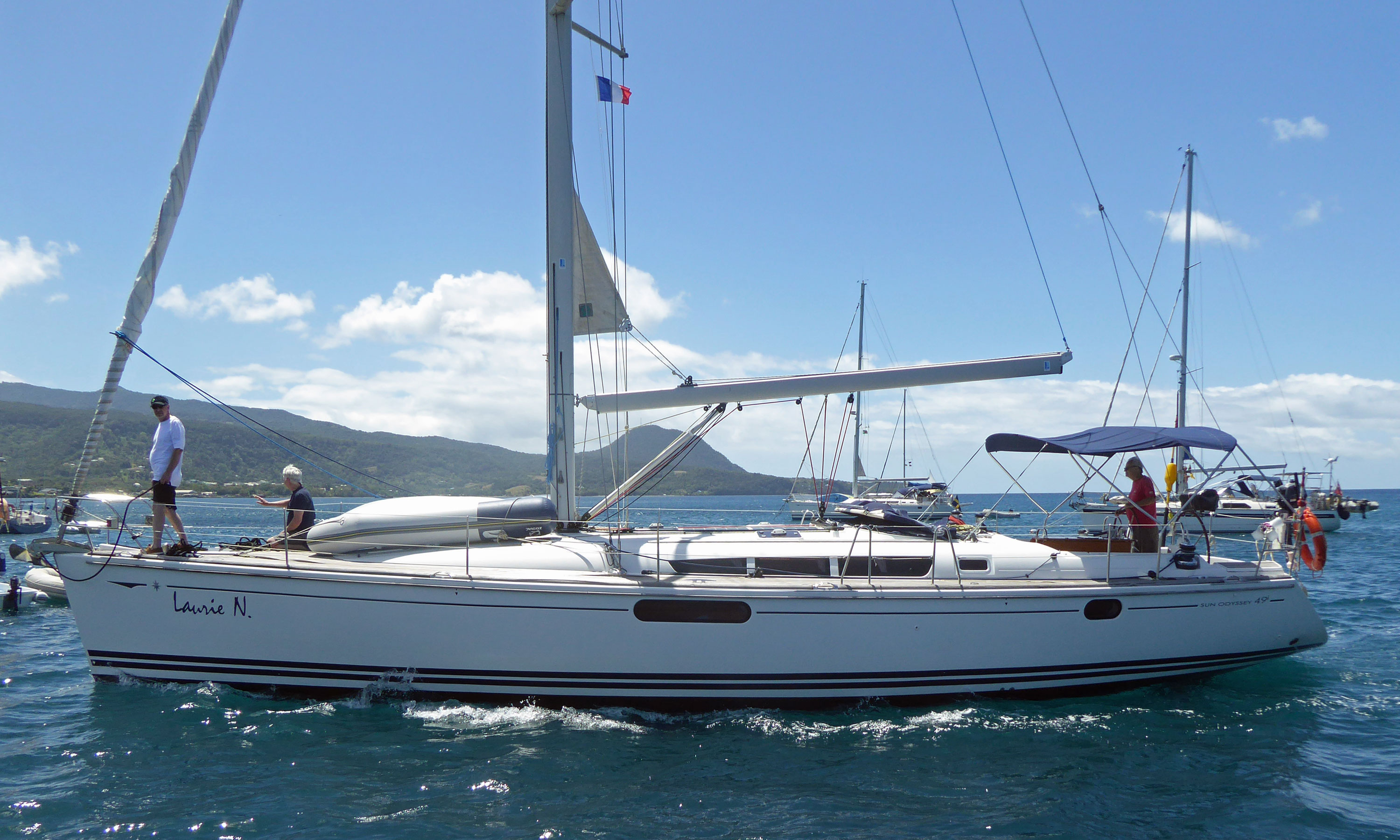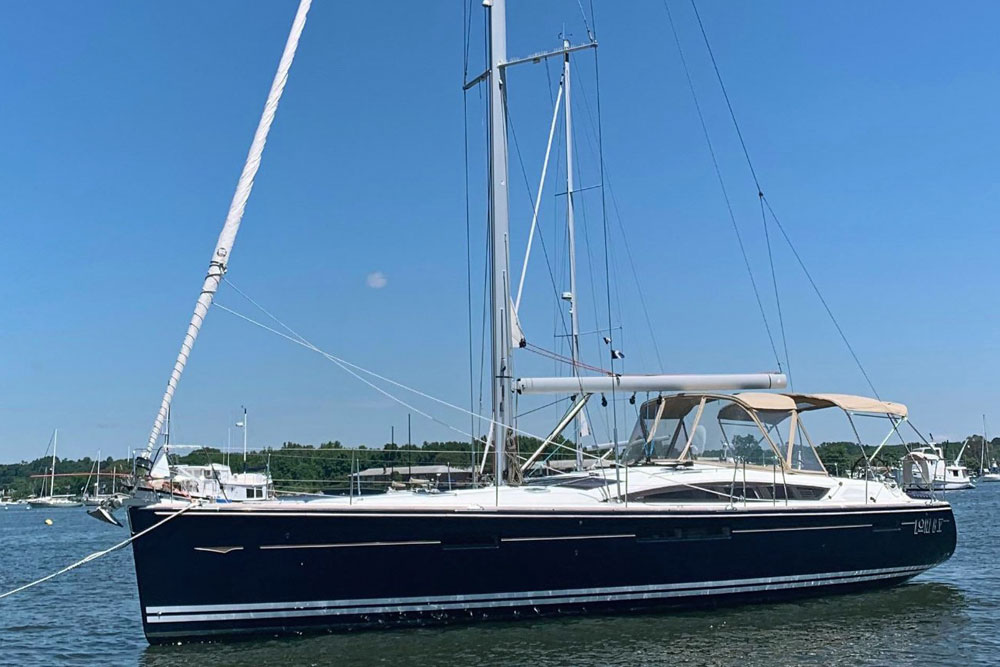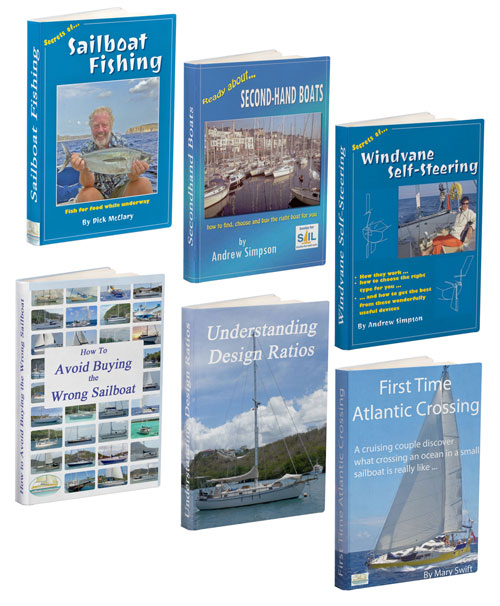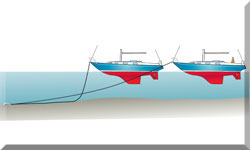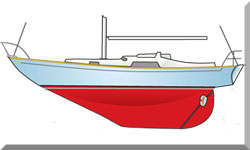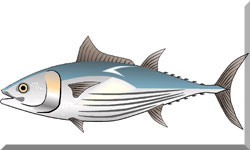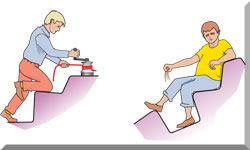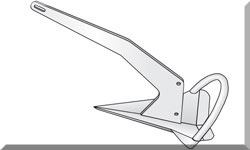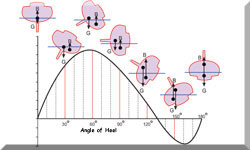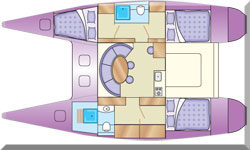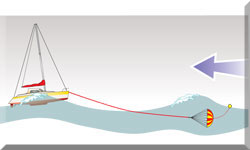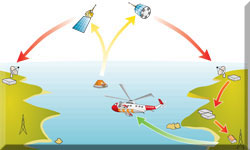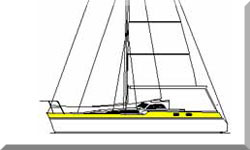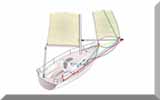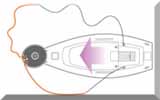- Home
- Cruising Yachts 40' to 45'
- Jeanneau Sun Odyssey 44 DS Specs
The Jeanneau Sun Odyssey 44 DS Sailboat
Specs & Key Performance Indicators
The Jeanneau Sun Odyssey 44 DS sailboat, designed by French naval architect Philippe Briand, is constructed by Jeanneau at their shipyard in Les Herbiers, France.
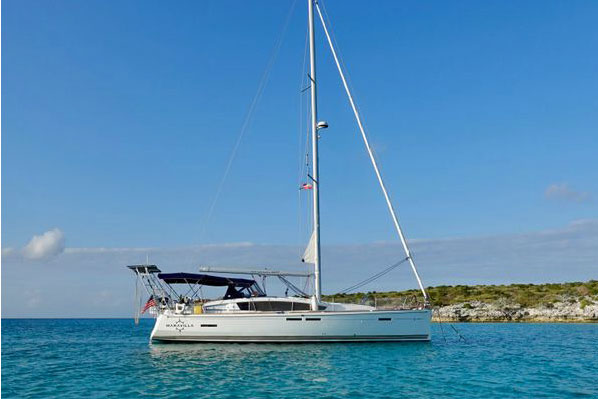 The Jeanneau Sun Odyssey 44 DS
The Jeanneau Sun Odyssey 44 DSPublished Specification for the Jeanneau Sun Odyssey 44 DS
Keel & Rudder Configuration: L-shaped keel with bulb, single spade rudder
Hull Material: GRP (Glass Reinforced Polyester)
Length Overall: 13.34 m / 43'9"
Waterline Length: 12.00 m / 39'5"
Beam: 4.24 m / 13'11"
Draft: 2.2 m / 7'3"*
Rig Type: Sloop, Marconi (in-mast furling mainsail)
Displacement: 9750 kg / 21495 lbs
Ballast: 3150 kg / 6945 lbs (cast iron)
Water Tank Capacity: 330 liters / 87 US gallons
Fuel Tank Capacity: 200 liters / 53 US gallons
Hull Speed: 8.41 knots
Designer: Philippe Briand
Builder: Jeanneau
Year First Built: 2011
Year Last Built: 2018
* A shoal draft version was also produced drawing 1.60 meters (5'3")
Options & Alternatives
Interior layout options:
- Two-cabin layout: Featuring a large owner's cabin aft and a guest cabin forward.
- Three-cabin layout: With two guest cabins forward and the owner's cabin aft.
- Saloon configurations: Options for different saloon layouts to optimize seating and dining arrangements.
The Jeanneau Sun Odyssey 44i, which was produced around the same time, is sometimes considered an alternative version. It featured a fractional sloop rig and a different keel configuration.
Sail Areas & Rig Dimensions
I: 16.75 m / 54'11"
J: 4.75 m / 15'7"
P: 16.15 m / 53'0"
E: 5.35 m / 17'7"
Total Sail Area: 81.5 m² / 877 ft² (upwind)
Published Design Ratios
The Key Performance Indicators (KPIs)
The published design ratios for the Jeanneau Sun Odyssey 44 DS sailboat suggest the following theoretical sailing characteristics:
- Sail Area to Displacement Ratio (SA/D: 17.35): This ratio falls within the range of 16 to 20, indicating reasonably good performance. The boat should have satisfactory power with respect to its weight, and it should perform well under sail in various wind conditions. It's not an ultra-high performer, but it will likely be agile and responsive.
- Ballast to Displacement Ratio (B/D: 32%): A ratio of 32% suggests that the boat has a moderate amount of ballast relative to its displacement. While it may not be as stiff or as powerful in standing up to the wind as boats with a B/D ratio of 40% or higher, it should still offer decent stability and ability to handle wind pressure, particularly so as much of the ballast is contained in the bulb at the foot of the L-shaped keel.
- Displacement to Length Ratio (D/L: 160): A D/L ratio of 160 falls into the category of Light Displacement (100-200). This means the boat should be relatively easy to drive to its hull speed with less required sail area. This lighter displacement typically translates to faster acceleration and better performance in lighter winds while maintaining agility.
- Comfort Ratio (24.51): With a comfort ratio of 24.51, the Jeanneau Sun Odyssey 44 DS is within the 20-30 range, indicating a motion associated with a coastal cruiser with moderate stability. The boat should provide a comfortable ride for its crew in a variety of sea conditions, making it suitable for extended cruising without causing excessive motion discomfort.
- Capsize Screening Formula (CSF: 2.01): The CSF of 2.01 is just above the threshold of 2.0, which suggests that the boat is on the cusp of being less ideal for ocean passages compared to coastal cruising. While it’s not as resistant to capsizing as boats with a CSF below 2.0, it still maintains a fair degree of stability and can handle offshore conditions with caution.
Summary
The Jeanneau Sun Odyssey 44 DS sailboat exhibits a well-balanced design suitable for coastal cruising with reasonably good sailing performance. It offers a comfortable ride with adequate stability and speed, though it may not be the best choice for extensive bluewater passages due to its slightly higher risk of capsize. Overall, it’s a capable vessel for sailors looking for a versatile and manageable cruiser.
Here's how to calculate the KPIs yourself - without having to wrestle with the mathematics...
Design Ratios: Notes of Caution...
- The Sail Area/Displacement Ratio (SA/D): This ratio provides an estimate of the sail power relative to the boat's weight, which can indicate potential speed in various wind conditions. But it doesn't account for the efficiency of the sail plan, the rigging, or the skill of the crew. Real-world performance can vary significantly based on these factors.
- The Ballast/Displacement Ratio (B/D): This ratio gives an idea of the boat's stability and stiffness, which is crucial for handling and safety. But it doesn't consider the distribution of the ballast or the hull shape, both of which can greatly affect stability. A high B/D ratio alone doesn't guarantee a stable boat if the ballast is poorly distributed.
- The Displacement/Length Ratio (D/L): This ratio helps predict the boat's speed potential and its behaviour in different sea conditions. But it doesn't account for the hull design or the boat's overall weight distribution. Two boats with the same D/L ratio can perform very differently if their hull shapes are different.
- The Comfort Ratio (CR): This ratio estimates the boat's motion comfort in a seaway, which is important for long passages. But it doesn't consider the boat's interior layout, which can also affect comfort. Additionally, personal tolerance to motion varies, so a boat that is comfortable for one person might not be for another.
- The Capsize Screening Formula (CSF): This formula assesses the likelihood of a boat capsizing in heavy seas, which is critical for offshore safety. But it doesn't take into account the boat's handling characteristics or the skill of the crew. A boat with a low CSF can still capsize if poorly handled in severe conditions.
General Limitations
- Static Nature: These ratios are static measurements and don't account for dynamic factors like wave action, wind gusts, or crew actions.
- Simplification: They simplify complex interactions into single numbers, which can be misleading. Real-world performance is influenced by a multitude of factors that these ratios can't fully capture.
- Context: The context in which the boat is used (e.g., coastal cruising vs. offshore racing) can greatly affect how these ratios should be interpreted.
In summary, while these ratios provide valuable insights into the theoretical performance characteristics of a sailboat, they should be used as part of a broader assessment that includes practical experience, sea trials, and expert advice.
This article was written with the assistance of Gemini, a large language model developed by Google. Gemini was used to gather information, summarize research findings, and provide suggestions for the content and structure of the article.
Other sailboats in the Jeanneau range include:
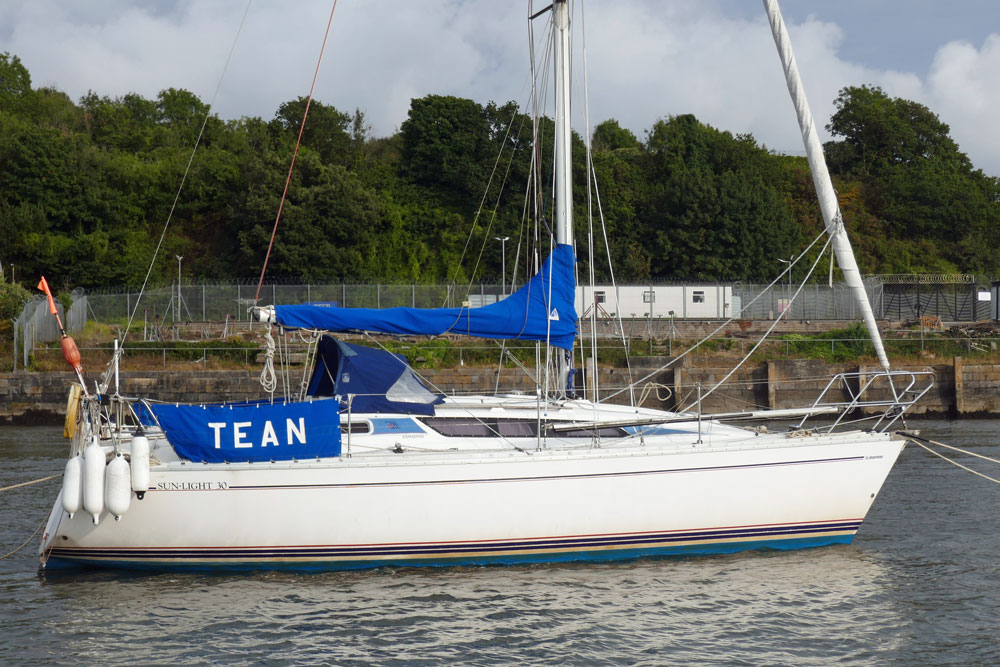 The Jeanneau Sun Light 30
The Jeanneau Sun Light 30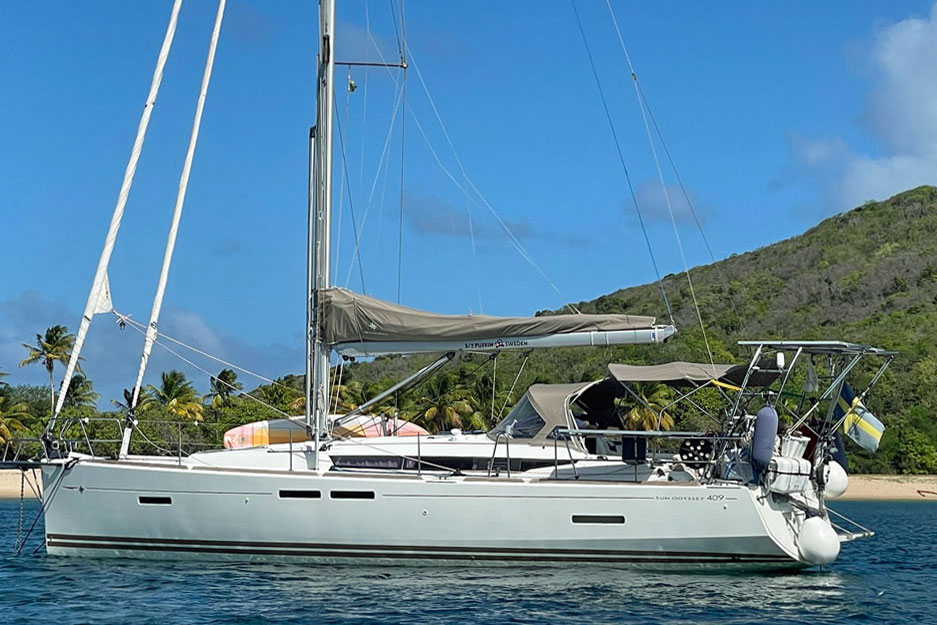 The Jeanneau 'Sun Odyssey' 409
The Jeanneau 'Sun Odyssey' 409Recent Articles
-
Which Type of Boat Fridge Is The Most Efficient?
Apr 24, 25 05:06 AM
The top opening boat fridge is reputed to be more efficient than the front opening type, but that may not be the case - and here, amongst other boat refrigeration considerations, is why -
Multihull Autopilot Selection is Not Straightforward
Apr 19, 25 01:25 PM
Whether its for a catamaran or a trimaran, tiller or wheel steered, a multi hull autopilot must be endowed with specific performance characteristics... -
Wheel-Steering Autopilots: Your Questions Answered...
Apr 18, 25 03:45 PM
Whatever your question, you should find the answer here
